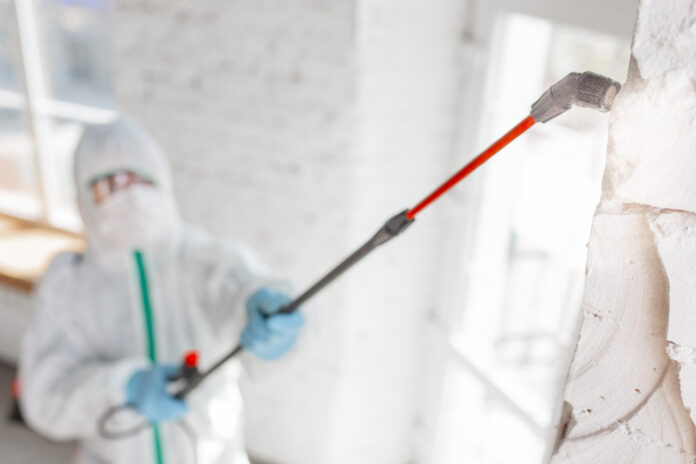Home insulation plays a critical role in maintaining energy efficiency, comfort, and indoor air quality. However, over time, insulation can deteriorate, leading to a range of problems such as reduced energy efficiency, moisture issues, and pest infestations. In this comprehensive guide, we’ll explore how to identify, evaluate, and address common insulation issues to ensure your home remains comfortable and efficient.
Spotting Insulation Weaknesses: Signs and Symptoms
When it comes to assessing insulation, it’s essential to be vigilant for signs of weakness that could compromise its effectiveness. One key indicator to watch for is a spike in utility bills, which may indicate that your insulation is not providing adequate thermal resistance. Additionally, drafts, uneven temperatures throughout the home, and visible gaps or deterioration in insulation materials are all signs that your insulation may be compromised.
During a termite letter inspection, inspectors may also identify areas where insulation has been damaged or displaced by pests, further reducing its effectiveness. By promptly addressing these weaknesses, homeowners can improve energy efficiency and comfort while preventing potential pest infestations.
Energy Efficiency Evaluation: Assessing Insulation Performance
Assessing the performance of your home’s insulation is crucial for maximizing energy efficiency and reducing heating and cooling costs. Conducting a comprehensive energy audit can help identify areas of heat loss or gain and determine the effectiveness of your insulation. Professionals can use tools such as thermal imaging cameras to detect areas of inadequate insulation or thermal bridging, where heat transfers through building materials.
During an energy efficiency evaluation, inspectors will assess insulation R-values, air leakage rates, and moisture levels to determine the overall performance of the insulation system. Based on their findings, homeowners can prioritize insulation upgrades or repairs to improve energy efficiency and comfort.
Common Insulation Problems: Causes and Consequences
Several factors can contribute to common insulation problems, each with its own set of causes and consequences. Poor installation, inadequate coverage, and compression of insulation materials can all compromise its effectiveness and lead to energy loss. Additionally, moisture infiltration, pest infestations, and aging materials can cause insulation to degrade over time, further exacerbating these issues.
The consequences of poor insulation extend beyond reduced energy efficiency. Moisture problems resulting from inadequate insulation can lead to mold growth, wood rot, and structural damage. Pest infestations can also pose health risks and require costly remediation efforts. Understanding the causes and consequences of insulation problems is essential for effective mitigation and prevention strategies.
DIY Insulation Inspection: Tips and Techniques
While professional inspections are recommended for comprehensive assessment of insulation issues, homeowners can perform their own DIY inspections to identify potential problems. Start by visually inspecting accessible areas of insulation, such as attics, crawl spaces, and basements, for signs of damage, compression, or pest activity. Look for gaps around doors, windows, and electrical outlets where insulation may be lacking.
Using a flashlight, carefully inspect insulation for signs of moisture damage, mold growth, or pest infestations. Pay attention to areas where insulation meets building materials, as these are common entry points for pests and sources of air leakage. Additionally, check for drafts around doors and windows, which may indicate inadequate insulation or air sealing.
Moisture Matters: Insulation and Water Intrusion
Moisture infiltration can significantly impact the performance and longevity of insulation, leading to mold growth, wood rot, and structural damage. Common sources of moisture intrusion include roof leaks, plumbing leaks, and improper ventilation. Inadequate insulation or air sealing can also contribute to condensation and moisture buildup within wall cavities or attics.
To prevent moisture problems, homeowners should ensure proper installation and maintenance of roofing systems, plumbing fixtures, and ventilation systems. Regularly inspecting and repairing damaged insulation, addressing air leaks, and maintaining proper indoor humidity levels can help mitigate the risk of moisture-related issues and prolong the life of insulation materials.
Ventilation Verification: Balancing Airflow and Insulation
Proper ventilation is essential for maintaining healthy indoor air quality, preventing moisture buildup, and optimizing the performance of insulation. Inadequate ventilation can lead to condensation, mold growth, and reduced insulation effectiveness. Conversely, excessive ventilation can result in energy loss and discomfort due to drafts and uneven temperatures.
During a ventilation verification inspection, professionals will assess the airflow throughout the home, including intake and exhaust vents, ductwork, and attic ventilation systems. They will also evaluate the effectiveness of air sealing measures to prevent air leakage and ensure optimal energy efficiency. Based on their findings, homeowners can make adjustments to improve ventilation and insulation performance.
Repairing Insulation Deficiencies: Solutions and Strategies
Addressing insulation deficiencies promptly is essential for restoring energy efficiency, comfort, and indoor air quality. Depending on the severity and extent of the issues, solutions may range from simple repairs to full insulation replacement. Common repair strategies include adding additional insulation to improve thermal resistance, sealing air leaks to prevent heat loss, and replacing damaged or deteriorated insulation materials.
For more extensive insulation problems, such as moisture damage or pest infestations, professional remediation may be necessary. This may involve removing and replacing damaged insulation, addressing underlying moisture issues, and implementing pest control measures to prevent future infestations. Working with qualified insulation contractors ensures that repairs are performed safely and effectively.
Professional Insulation Assessment: When to Call in the Experts
While DIY inspections can help identify obvious insulation issues, professional assessment is recommended for comprehensive evaluation and targeted solutions. Homeowners should consider calling in insulation experts if they notice significant energy efficiency issues, persistent drafts, or signs of moisture or pest problems. Professional inspectors have the knowledge, tools, and experience to identify hidden issues, assess insulation performance, and recommend appropriate repairs or upgrades.
During a professional insulation assessment, inspectors will conduct a thorough evaluation of the home’s insulation system, including insulation levels, air sealing, ventilation, and moisture management. They will provide homeowners with a detailed report of their findings and recommendations for improving energy efficiency and comfort. By investing in a professional insulation assessment, homeowners can ensure their insulation system is functioning optimally and avoid potential problems down the line.
Conclusion
Uncovering and addressing home insulation issues is essential for maintaining energy efficiency, comfort, and indoor air quality. By understanding the signs and symptoms of insulation problems, evaluating insulation performance, and implementing appropriate solutions, homeowners can ensure their homes remain efficient, comfortable, and healthy for years to come. Whether conducting DIY inspections or seeking professional assessment, prioritizing insulation maintenance and repair is key to protecting your investment and enjoying a more comfortable living environment.



